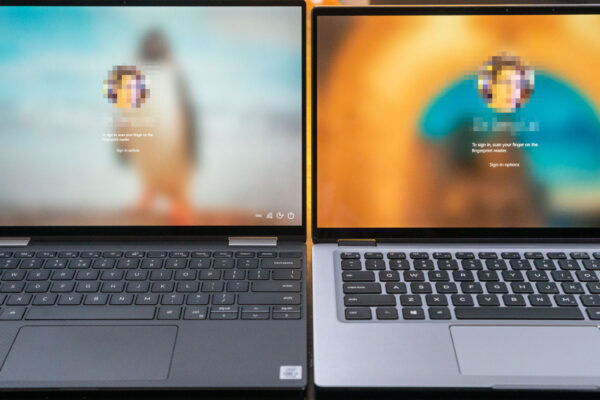
In May this year, Intel announced Project Athena, a new specification for ultra-thin and ultra-light notebooks designed to guarantee a certain level of mobile experience. It is like the Ultrabook specification from eight years ago, but updated to current day expectations.
Ultra-thin and ultra-light notebooks have become quite common place in the last half decade. Unfortunately, they often come with some compromises, and it is hard to tell from reading technical specifications and marketing materials how they perform in real-world use.
The idea of Project Athena is to define minimum standards that notebooks must meet. This sounds like the Ultrabook specification Intel launched in 2011, which provided some guidance toward Wintel notebook designs that competed with Apple’s MacBook Air.
With Project Athena, Intel says they will work with manufacturers to design notebooks that meet the standard. They will also test and certify them. Identifying and recognising these notebooks, however, won’t be as easy as it should be. Right now, Project Athena has no brand or logo. Intel says there will be a “visual identifier”, but this seems to appear limited to online and in-store displays at this time.
What are the benefits delivered Project Athena notebooks? For people needing to work on-the-go, away from a power source, battery life is perhaps the most important. Project Athena will give some assurance that these notebooks are good for mobile road warriors by requiring them to support:
- 16 or more hours of battery life in local video playback mode (150 nits screen brightness, airplane mode)
- 9 or more hours of battery life under real-world performance conditions (250 nits screen brightness with a variety of running applications, including Google Chrome with multiple tabs open)
The second figure for battery life endurance is very important, as it is based on a reasonable expectation of how a notebook will be configured, setup, and used. For example, it assumes default OEM out-of-the-box settings including any of their value-add software.
Project Athena also has numerous hardware level requirements. This includes support for:
- Wi-Fi 6 (Gig+)
- Thunderbolt 3
- Fast charging over USB Type-C
- Modern Connected Standby, with instant resume, including system wake from sleep in less than 1 second
Form factor, like in the Ultrabook specification, continues to be a part in the Project Athena. Notebooks are required to have narrow bezels on three sides. Furthermore, touch with pen support, backlit keyboard, and precision touchpad are specified in the standard.
There are also some minimum performance specifications required by Project Athena. These presently include:
- Intel Core i5 or i7 processors with Intel® Dynamic Tuning Technology
- At least 8 GB of dual-channel DDR memory
- At least 256 GB of NVMe SSD, with Intel Optane memory H10 options
The Project Athena standard at this stage is known as the 1.0 target specification. The target specifications will no doubt be updated from time to time to reflect newer expectations as technology progresses.
Intel’s innovation partners for Project Athena include Acer, ASUS, Dell, Google, HP, Lenovo, Microsoft, Samsung, and Sharp, among others.
Dell’s XPS 13 2-in-1 7390 convertible notebook is the first device to be Project Athena certified. The full list of devices presently certified, according to a Tom’s Hardware, are:
- Dell Inspiron 14 7000
- Dell Latitude 7400 2-in-1
- Dell XPS 13 2-in-1 7390
- HP Elite Dragonfly
- HP EliteBook x360 1030 G4
- HP EliteBook x360 1040
- HP EliteBook x360 830
- HP Spectre x360 (13-inch, 2019)
- Lenovo ThinkPad X1 Carbon
- Lenovo Yoga C940
- Lenovo Yoga S940
- Lenovo Yoga S740
- Samsung Galaxy Book Flex
- Samsung Galaxy Book Ion
Project Athena captures some of the basic expectations we have of notebooks in current times. For me, this includes minimum battery life in real-world use, USB Type-C power, and Thunderbolt 3 support. Ultra-thin and ultra-light is still wanted, of course. It’s great to see Intel providing some guidance to manufacturers in designing new notebooks. The many new and notable notebooks hitting the market in the tail end of this year mean plenty of good choices for customers.
(Note:Notebooks above are the Dell XPS 13 7390 2-in-1 and Dell Latitude 7400 2-in-1.)
